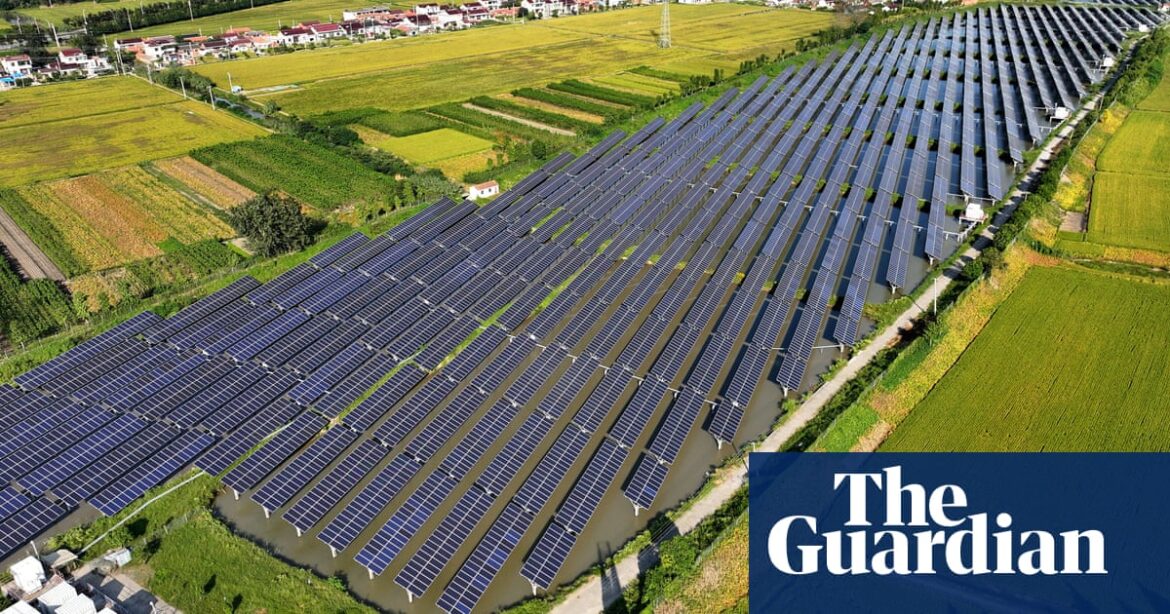
China is expected to account for almost 60% of all renewable energy capacity installed worldwide between now and 2030, according to the International Energy Agency.
The IEA’s highly influential renewable energy report found that over the next six years renewable energy projects will roll out at three times the pace of the previous six years, led by the clean energy programmes of China and India.
It found that the world’s renewable energy capacity is on course to outpace the 2030 goals set by governments to roughly equal the power systems in China, the EU, India and the US combined.
Fatih Birol, the executive director of the IEA, said: “If I could sum this [trend] up in two words they would be: China, solar.”
China will have over half of the world’s renewables by the end of the decade. The solar power surge is thought to have slowed China’s coal power pipeline, which grew by 100 GW of new power plant permits in 2022 and 2023. In the first half of 2024 China issued permits for only 12 new projects totaling 9.1 GW, according to Global Energy Monitor.
The growth in solar capacity to 2030 will account for 80% of all new renewable power added globally by the end of this decade, according to the IEA. It expects the rollout to accelerate due to declining costs and policy support which will enable homes and businesses to invest in solar panels to reduce their electricity bills.
Wind power is also showing signs of recovering from the steep hike in interest rates and supply chain costs which has hampered the industry, particularly for capital-intensive offshore windfarms.
The IEA expects that the rate of global wind power growth will double between 2024 and 2030 compared with the previous six years. In the UK, the government has set a target of quadrupling Britain’s offshore wind power by 2030 while spurring the development of floating wind turbines.
Floating windfarms are expected to be a small share of the offshore wind industry by 2030 but a new report by Renewable UK, published on Wednesday, has found that by 2050, floating turbines could provide one-third of the UK’s offshore wind capacity and contribute £47bn to the economy, particularly Scottish and Welsh port communities.
Birol said: “Renewables are moving faster than national governments can set targets for. This is mainly driven not just by efforts to lower emissions or boost energy security – it’s increasingly because renewables today offer the cheapest option to add new power plants in almost all countries around the world.”
The green energy boom means renewables are on track to grow by 2.7 times by 2030, exceeding the goals set out by governments by nearly 25%, the report found. But this growth still falls narrowly short of the commitment made by world leaders to triple renewables by the end of the decade to cut the world’s reliance on fossil fuels.
About 120 world leaders pledged to triple the world’s renewable energy capacity before 2030 in a bold attempt to slash the global consumption of fossil fuels at the UN’s Cop28 climate talks in Dubai last year.
after newsletter promotion
Birol said it was “entirely possible” to meet the target, and added that there were three steps that global governments could take to speed up the rate at which renewable energy becomes operational.
First, global leaders need to recognise the “critical importance of building power grids” to speed up the connection of new renewable energy projects, he said. The IEA found that at least 1,650 gigawatts of renewable capacity were now in advanced stages of development and waiting for a grid connection, 150GW higher than at this point last year.
Birol added that countries needed to reduce the time it took for renewable energy developers to get permission for new projects. It can take seven years for windfarms, he said, and five years for a solar farm.
Finally, the IEA urged international financial institutions needed to do more to back renewable energy in emerging and developing economies which continued to lag behind developed countries.
“One of the biggest ‘energy inequalities’ I see is in sub-Saharan Africa where one in two people don’t have access to reliable electricity. It has enormous solar power potential and yet across the whole region there is the same solar capacity as in Belgium. It is frustrating,” he said.
Source: theguardian.com



